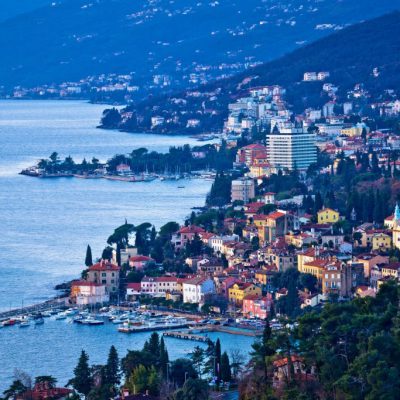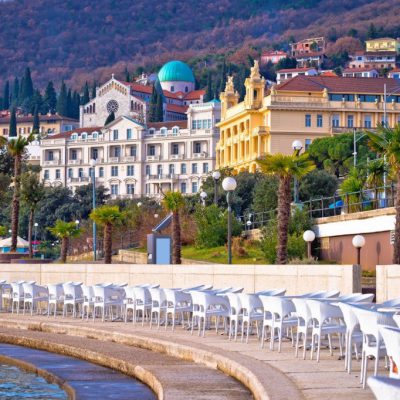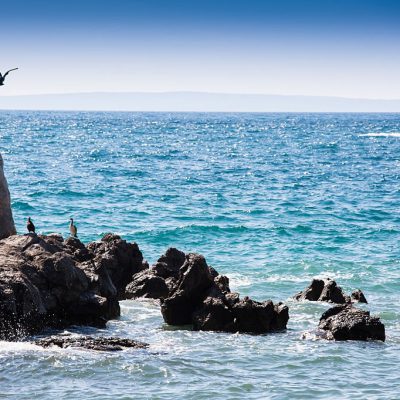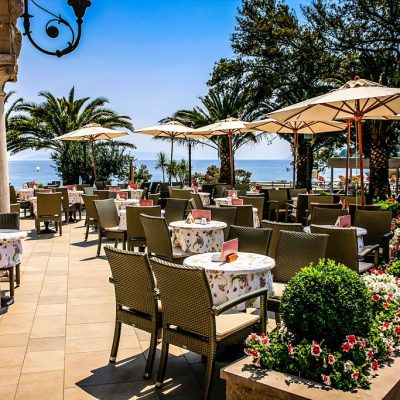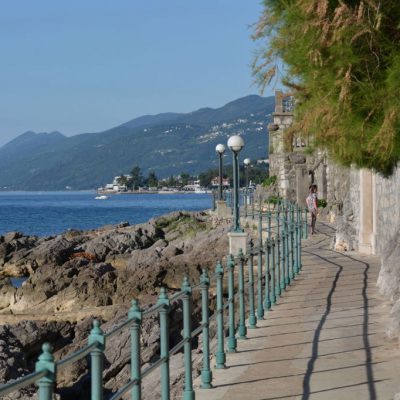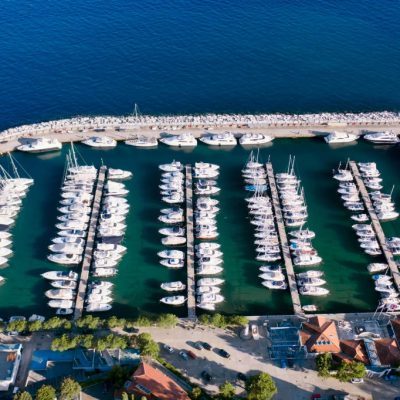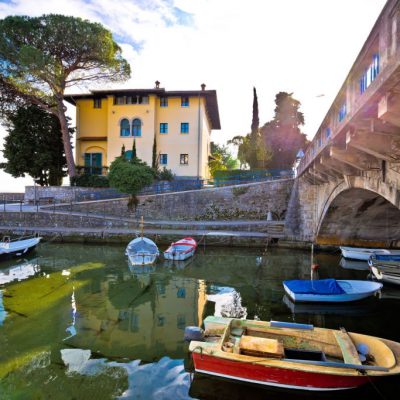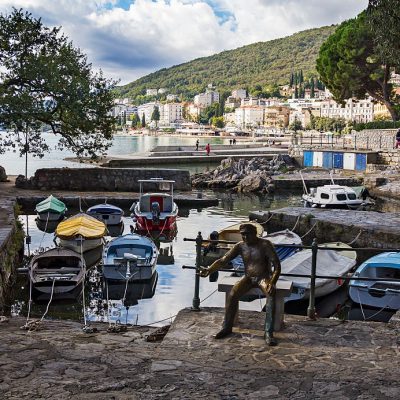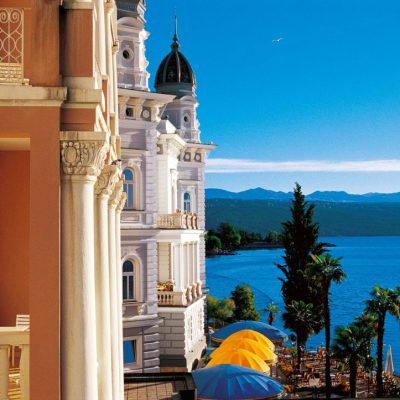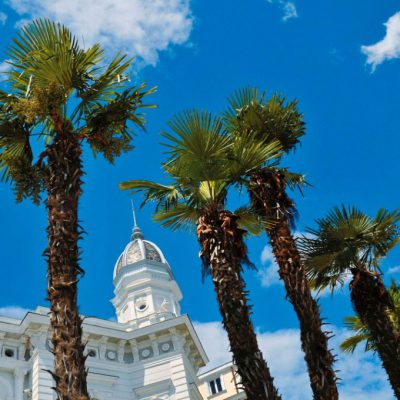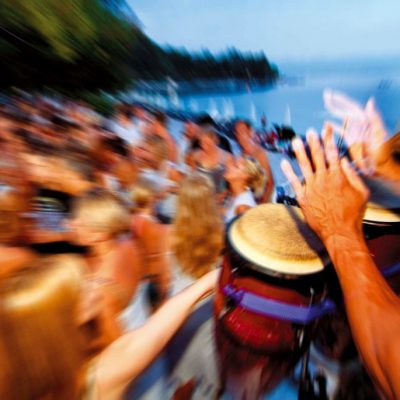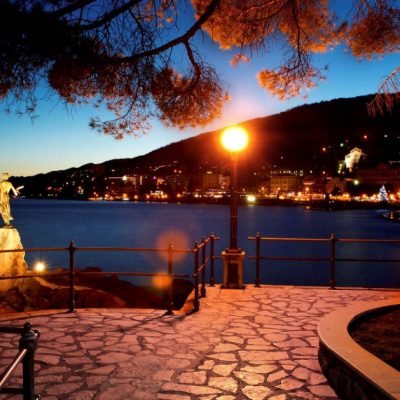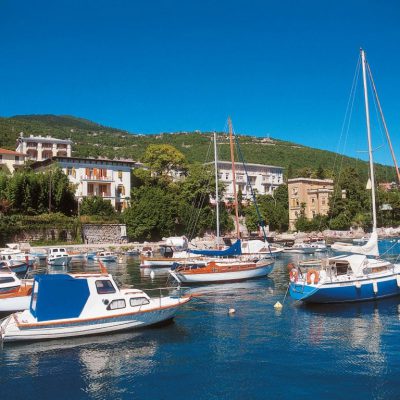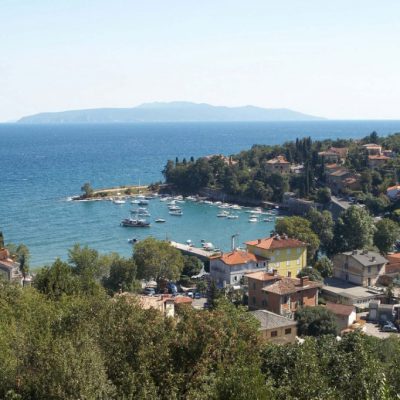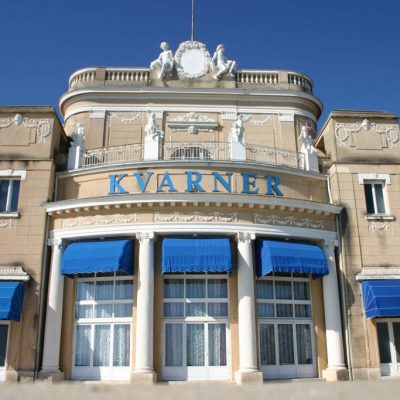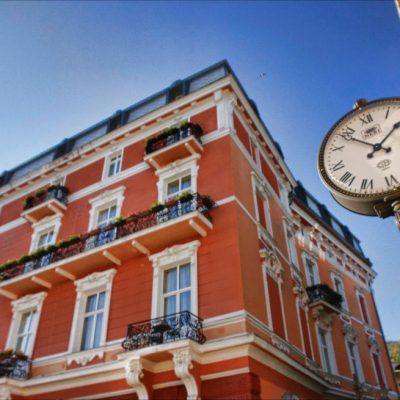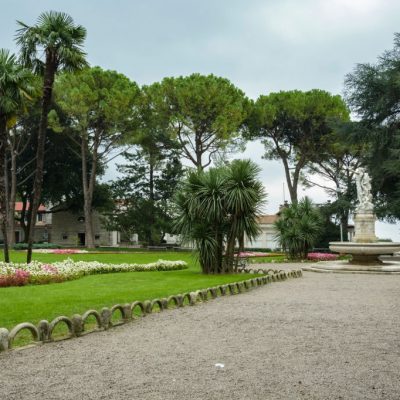Opatija got its name from an abbey (opatija in Croatian) that was established here in the late Middle Ages by Benedictine monks. Opatija’s history as a tourist destination begins in the 1840’s when a merchant from the nearby city of Rijeka, Iginio Scarpa, built the Villa Angiolina which served as both a family retreat and a venue for high-society gatherings.
About
Opatija got its name from an abbey (opatija in Croatian) that was established here in the late Middle Ages by Benedictine monks. Opatija’s history as a tourist destination begins in the 1840’s when a merchant from the nearby city of Rijeka, Iginio Scarpa, built the Villa Angiolina which served as both a family retreat and a venue for high-society gatherings.
Very soon Opatija established itself as a health resort thanks to the favourable climate, and its development was assisted by the construction of a railway linking the town with Opatija and Trieste. Celebrities and nobility flocked to Opatija; Russian tsars, Swedish king, Gustav Mahler, Isadora Duncan, Giacomo Puccini and Anton Chekov among many others.
Useful info
Tourist Information Centre
Tourist Information Centre is at Maršala Tita 128.
Medical center is at V. Nazora 4. Pharmacies can be found along the Maršala Tita Street.
Postal service
Post office is at Eugena Kumičića 4, behind the market.
Banks
Erste & Steiermärkische Bank, Hypo Alpe Adria Bank, OTP banka, Privredna banka Zagreb and Zagrebačka banka have their offices and ATMs in Opatija. You can change money in travel agencies.
Traffic
The easiest way to reach Opatija is from Rijeka – it takes only 20 minutes by car. There are buses from Opatija to Rijeka roughly every half an hour: in Rijeka, the bus stops in front of the train station, so you can take a train to Rijeka and continue to Opatija by bus.
The nearest airports are Rijeka (on Krk island) and Pula.
Visit
Villa Angiolina
Built in 1844 and seen as a landmark in the town’s development as a high-society resort, the villa now serves as the Museum of Croatian Tourism. Displaying old photographs, antique guide-books and resort posters, the museum itself provides a colourful
and entertaining introduction to the history of the travel industry.
The Girl with a Seagull
Definitely one of the most pictured motifs through which Opatija presents itself to the world is the sculpture of a girl with a seagull on her hand. It was made in 1956 by the sculptor Zvonko Car. It was placed on the same spot where the sculpture of the Madonna was placed in memory of Arthur Kesselstadt, who tragically died at sea in 1891.
The Croatian Walk of Fame
Initiated in 2006, this project has become a must-see spot in Opatija. Inspired by the Hollywood Walk of Fame, it honours renowned and famous Croatians who have been promoting Croatia to the world. Marble stars with their names are placed along Opatija’s Slatina promenade.
Park Angiolina and the Church of Saint James
Opatija’s central park is a horticultural masterpiece of 3.64 acres divided into two parts: one next to Villa Angiolina and the second part which is next to the Church of Saint James. The gardens have around 150 different plants from all over the world. The cedars, sequoias, gingko, palms and oaks still flourish today, making this one of Croatia’s most important dendrological collections. Among many interesting plants there is a Japanese Camellia which has become a symbol of Opatija.
Franz-Jozef Promenade – Lungomare
This pedestrian-only path that runs along the shore from Volosko (3 km to the north) to Lovran (6 km to the south) is an iconic part of Opatija well-worth visiting. Winding its way by rich grdens and ornate villas, the promenade offers fantastic views across the Kvarner Bay to Rijeka, with the lush Gorski Kotar mountains in the background.
Recreation
The proximity of Opatija to Mountain Učka provides excellent opportunities for hiking and visiting the Risnjak National Park with its unspoiled forests and rich wildlife. The guests can also enjoy biking and walking along the Opatija Riviera.
Gastro
Restaurants in Opatija are famous for their seafood, from simple meals such as marinated and grilled sardella and shrimp to savory black risotto or mussels buzara.
Wines
Some of the top Croatian wines can be sampled in Opatija. All of the town’s high-quality hotels and restaurants have extensive wine lists from which you can choose a wine to your taste. Try Zlatna vrbnička žlahtina, Istrian Malvazija or Merlot. The lively bars provide a variety of cocktails, and you can also try chocolate drinks at Choco Bar.



